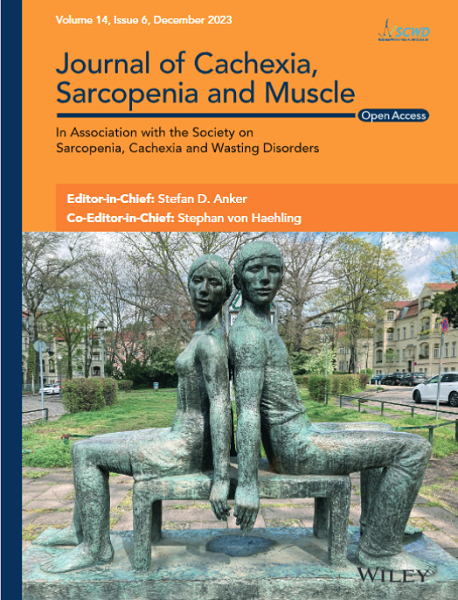Early Administration of Bosentan in High-Risk COVID-19 Outpatients at Risk of Sarcopenia: A Randomized, Double-Blind, Placebo-Controlled Trial
Abstract
Background
Endothelial damage induces myofibrillar breakdown and muscle degradation in COVID-19 infection. There is a relationship between increased endothelin-1 synthesis and sarcopenia. We evaluated the preventive effect of early bosentan therapy as an endothelin receptor blocker in sarcopenia in high-risk outpatients with COVID-19 infection.
Methods
From 15 December 2021 to 15 August 2023, patients within 3 days of the onset of signs and symptoms were randomly assigned to receive bosentan, 62.5 mg, or placebo, twice daily from enrollment for 30 days. The primary outcome was disease progression (death or hospitalization within 15 days after randomization), and the data for this outcome have been previously published. Sarcopenia as a secondary outcome was assessed prospectively at 3, 6, 9 and 12 months after randomization using the criteria of the Asian Working Group for Sarcopenia (AWGS) 2019 (IRCT.ir, IRCT20211203053263N1).
Results
A total of 313 patients (156 bosentan group, 157 controls) were included in the analyses, which were performed under the intent-to-treat principle. Overall, the incidence of sarcopenia was 8.6% (n = 27). Nineteen (73%) had severe sarcopenia. At the 3-month follow-up, the incidence of sarcopenia was 8.3% in the total population, with the significant risk difference (RD) of −10.17% in the bosentan group versus the control group. The incidence in the total population and RD in the bosentan group versus the control group at months 6, 9 and 12 were 8.6% (RD: −10.81%, p < 0.001), 8.3% (RD: −10.17%, p = 0.001) and 5.4% (RD: −6.99%, p = 0.003), respectively. During the study, 29 people developed severe COVID-19 and were hospitalized. At follow-up, sarcopenia occurred in four inpatients and 23 outpatients (p = 0.23). Mortality occurred in 5.1% (n = 16) of the total population, including 4 (1.3%) of the patients in the bosentan group and 12 (3.8%) of the patients in the placebo group (p = 0.069). None of the patients who died had sarcopenia. Bosentan did not cause any severe adverse events and was well tolerated.
Conclusion
Early administration of bosentan may prevent sarcopenia in high-risk outpatients with COVID-19.


 求助内容:
求助内容: 应助结果提醒方式:
应助结果提醒方式:


